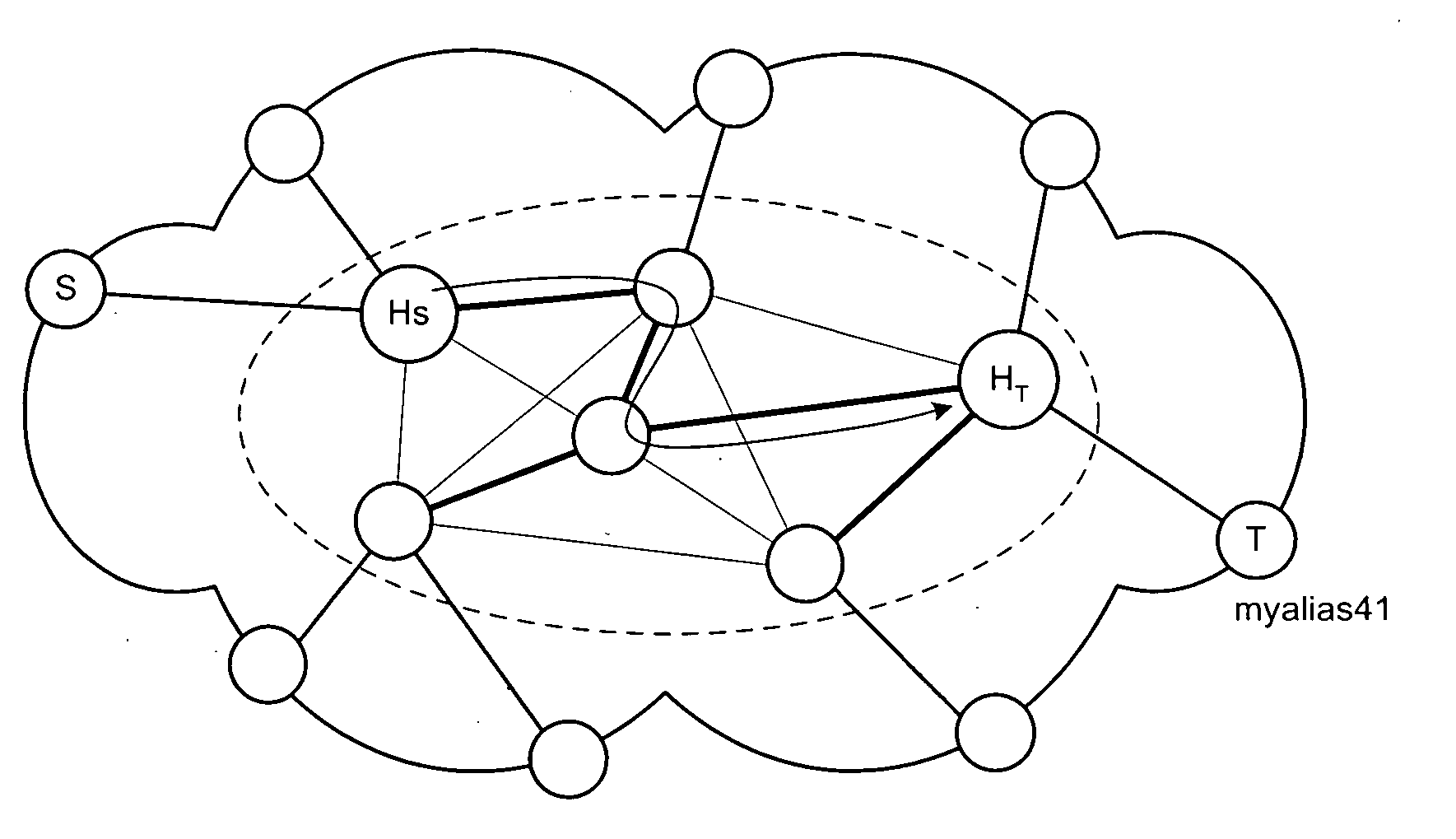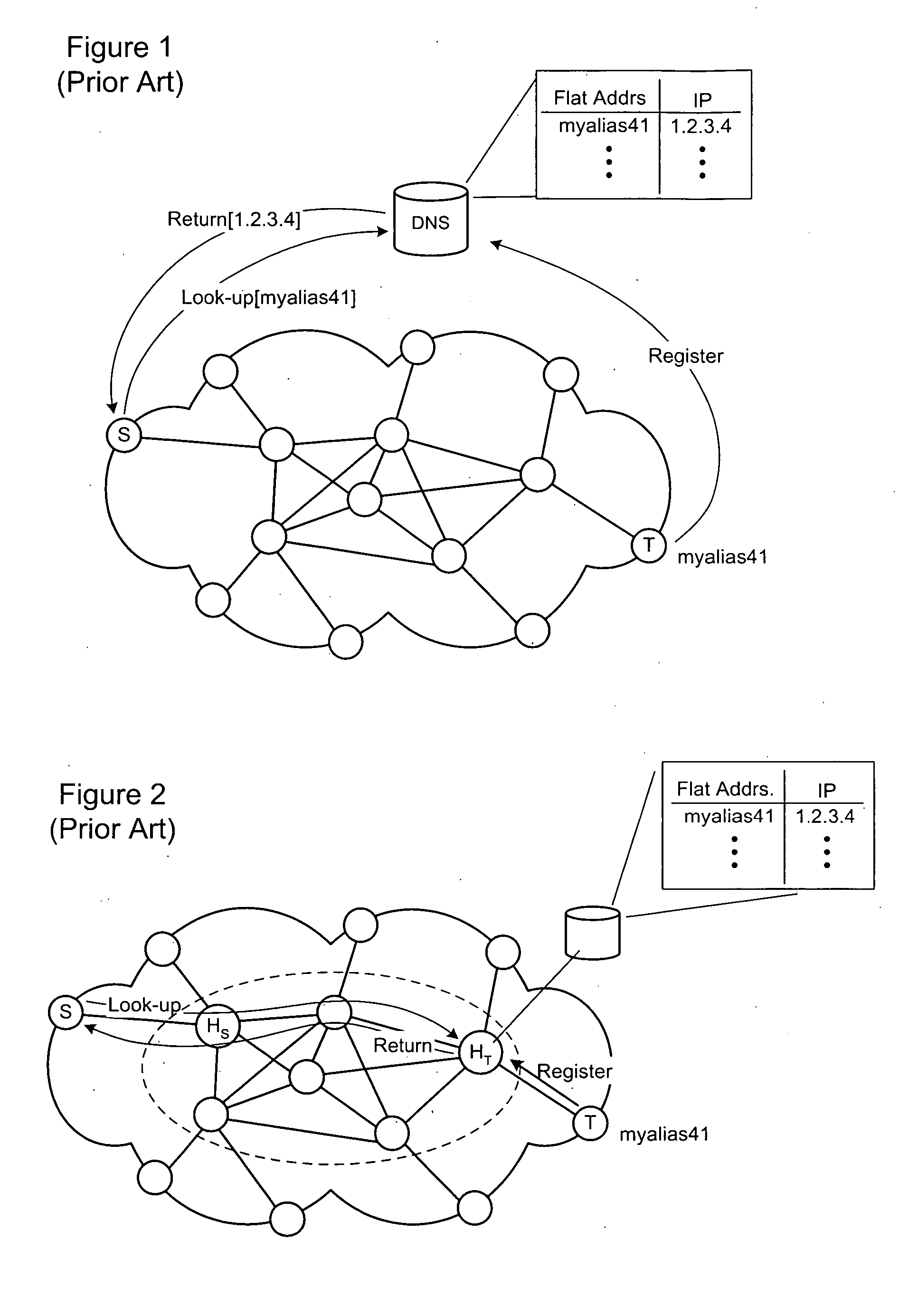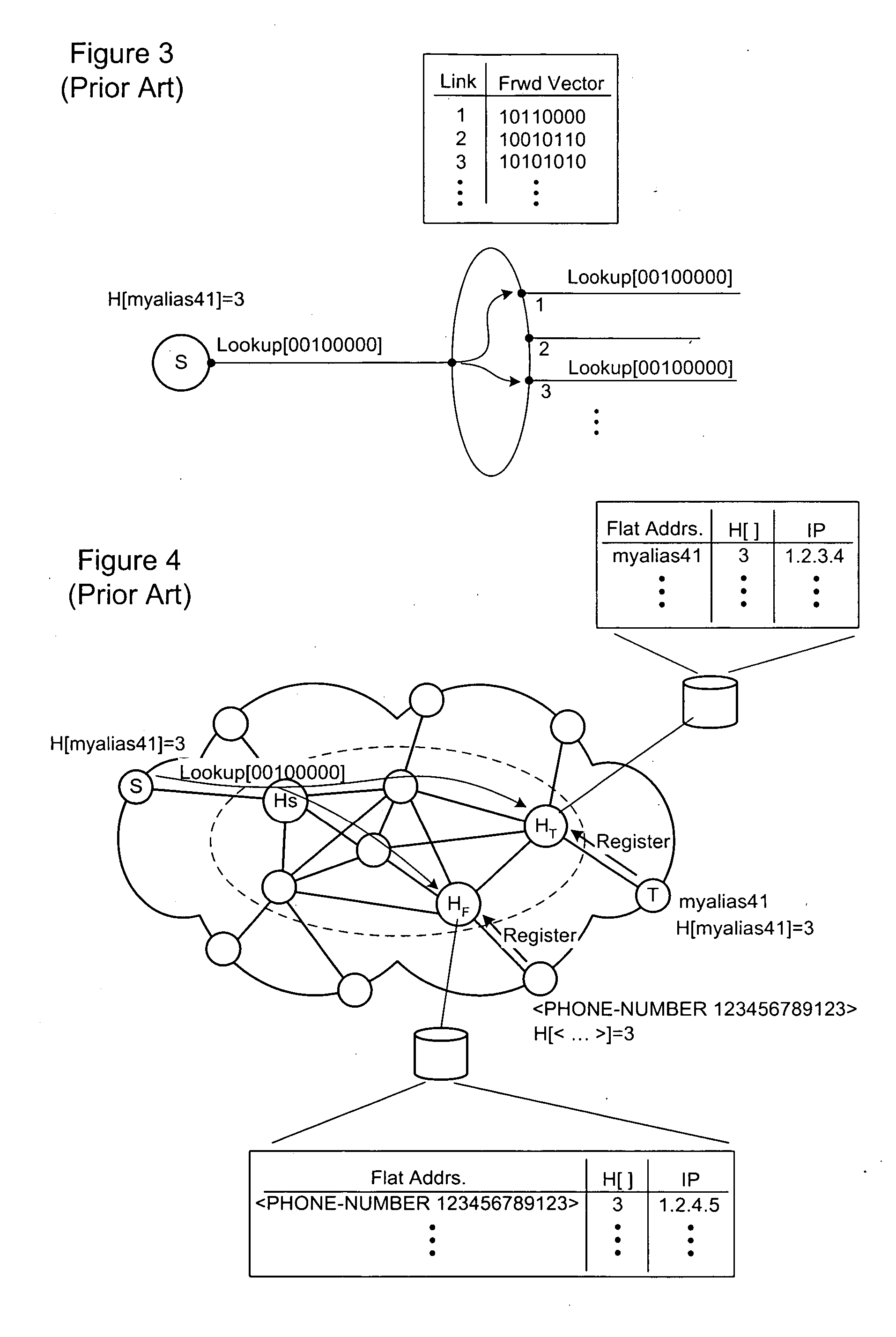Registration, look-up, and routing with flat addresses at enormous scales
a technology of flat addresses and registration, applied in the field of packet data networks, can solve the problems of inability to obtain network addresses, demands on server resources, and numerous limitations in the approach
- Summary
- Abstract
- Description
- Claims
- Application Information
AI Technical Summary
Problems solved by technology
Method used
Image
Examples
Embodiment Construction
[0028] The present invention provides methods for registration, look-up, and routing with flat addresses at enormous scales. Embodiments of the invention are described below, by way of example only, with reference to FIGS. 5-8.
[0029] In general, the present invention solves the problem of looping by computing a spanning tree (ST) through the network of super-nodes. Registration of Network and user's addresses can then be performed by flooding registration messages (and / or forwarding table updates e.g. via link state advertisements) through the computed tree. Similarly, flooding of look-up queries is restricted to the computed tree, which prevents looping because an ST, by definition, does not contain loops.
[0030] As is well known in the art, there are a number of techniques for computing a spanning tree (ST) through a network of nodes. However a preferred approach is to use a link state protocol such as OSPF / IS-IS to provide each node with the full view of the super-node network t...
PUM
 Login to View More
Login to View More Abstract
Description
Claims
Application Information
 Login to View More
Login to View More - R&D
- Intellectual Property
- Life Sciences
- Materials
- Tech Scout
- Unparalleled Data Quality
- Higher Quality Content
- 60% Fewer Hallucinations
Browse by: Latest US Patents, China's latest patents, Technical Efficacy Thesaurus, Application Domain, Technology Topic, Popular Technical Reports.
© 2025 PatSnap. All rights reserved.Legal|Privacy policy|Modern Slavery Act Transparency Statement|Sitemap|About US| Contact US: help@patsnap.com



